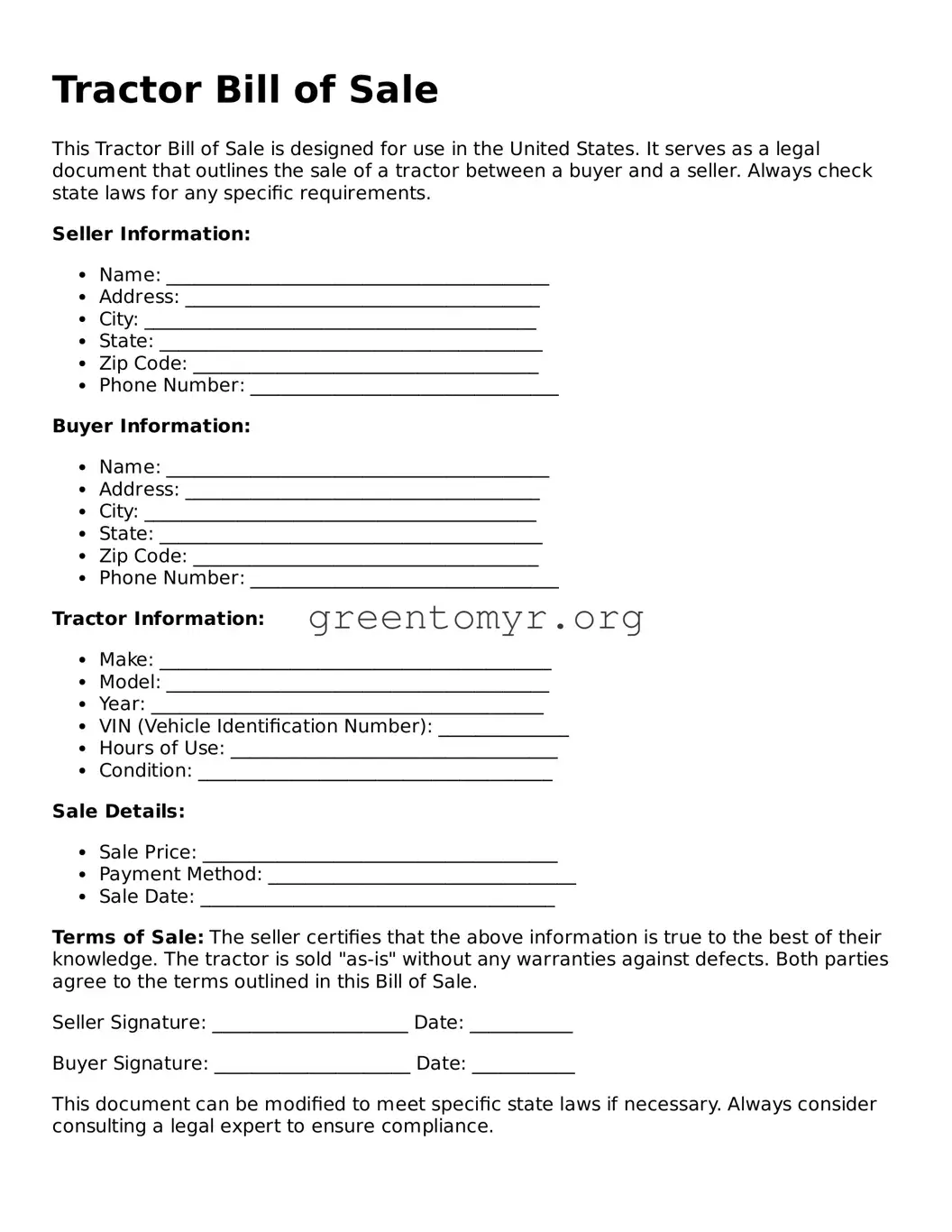What is a Tractor Bill of Sale?
A Tractor Bill of Sale is a legal document that serves to officially transfer ownership of a tractor from one party to another. This document provides proof of the transaction and includes important information about the vehicle, including its make, model, year, and VIN (Vehicle Identification Number). It protects both the buyer and seller by documenting the conditions of the sale.
Why do I need a Tractor Bill of Sale?
This document is essential for several reasons. First, it provides proof of purchase, which can be required for tax purposes. Second, it can help avoid disputes in the future regarding ownership, as it clearly states the parties involved in the transaction. Lastly, it assists in the process of registering the tractor under the new owner's name.
The following information is typically included in a Tractor Bill of Sale:
-
Names and addresses of the buyer and seller
-
Description of the tractor (make, model, year, and VIN)
-
Purchase price
-
Date of sale
-
Signatures of both parties
Including accurate and complete information is crucial for the validity of the document.
Do I need a notary for the Tractor Bill of Sale?
In most cases, a notary is not required for a Tractor Bill of Sale. However, having the document notarized can add an extra layer of verification and authenticity. If you’re unsure, it may be wise to check your state’s requirements regarding notarization for vehicle sales.
How do I complete a Tractor Bill of Sale?
To complete a Tractor Bill of Sale, follow these steps:
-
Gather the necessary information about the tractor and the parties involved.
-
Fill out the form accurately, ensuring all details are correct.
-
Both the buyer and seller should read the document thoroughly.
-
Sign the form in the appropriate places.
-
Consider notarizing the document if required or desired.
Once completed, each party should keep a copy for their records.
Can I use a Tractor Bill of Sale for a payment plan?
While the standard Tractor Bill of Sale covers outright sales, you can create a version that includes terms for a payment plan. This can stipulate the payment method, schedule, and conditions for ownership transfer. It's always best to clarify any payment terms directly within the document to avoid misunderstandings.
What if I lose my Tractor Bill of Sale?
If the Tractor Bill of Sale is lost, it may be challenging to prove ownership. In such cases, contact the other party involved in the transaction to obtain a copy. If getting a copy isn’t feasible, consider reaching out to local authorities or your state’s vehicle department for guidance on how to establish ownership in lieu of the lost document.
Is a Tractor Bill of Sale the same as a title?
No, a Tractor Bill of Sale is not the same as a title. The title is a formal document that proves ownership of the tractor and is issued by the state. On the other hand, the Bill of Sale is a record of the transaction. When selling or purchasing a tractor, both documents are important for the correct transfer of ownership.
Are there any fees associated with using a Tractor Bill of Sale?
Typically, there are no fees for completing and using a Tractor Bill of Sale itself. However, various fees may arise during the registration process or if you seek to have the document notarized. It’s advisable to check with your local Department of Motor Vehicles (DMV) for any specific costs related to tractor ownership transfer.
